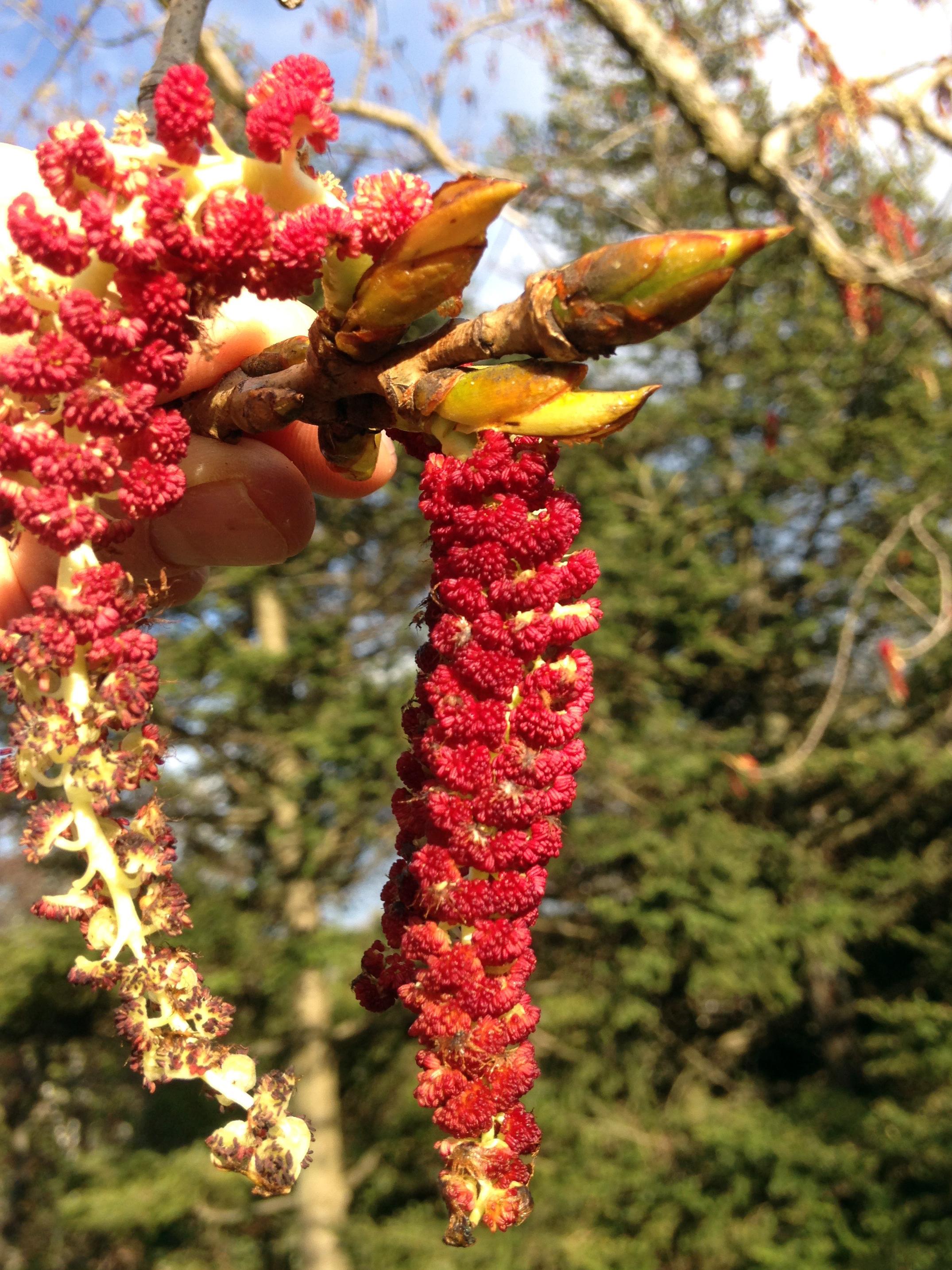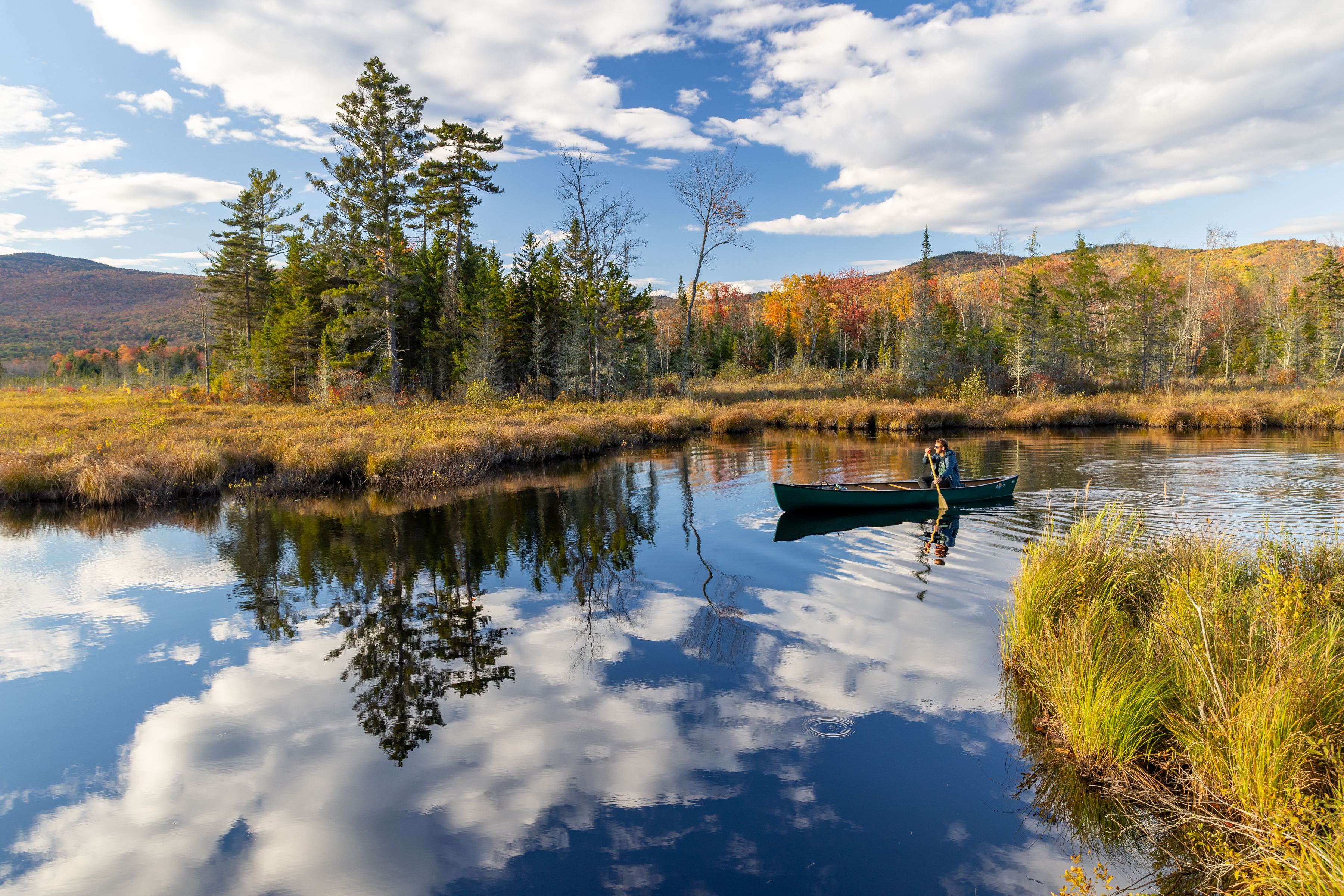- Tags:
- Something Wild,
- Wildlife,
- Land Conservation

An Eastern Cottonwood catkin.
Have you ever walked or paddled along a riverbank, and noticed a towering tree with deeply-furrowed gray bark and huge bright green leaves that flutter in the breeze like butterfly wings? If so, you’ve probably met the Eastern Cottonwood.
The poplars are a few of New England’s amazing tree pioneers. Cottonwoods, along with related big-toothed and trembling Aspens, aren’t always given much respect, yet they are unsurpassed at what they do.
Cottonwoods love to sink their toes in the sand; think riverbanks, floodplains, sandy spots that often flood in the Spring.
In the arid West, cottonwoods grow on canyon floors, indicating the presence of hidden underground water.
But here in New Hampshire, most cottonwoods grow right along our major rivers, where water levels rise and fall unpredictably.
They grow fast, shooting up to 100 feet tall in just a few decades. When mature, their massive branching trunks can easily exceed 3 feet at the base. The downside to their rapid growth is that they produce soft wood, not very dense and lacking the high heating value found in oaks and maples.
Spreading crowns of big riverside cottonwoods often have major branches that fork three ways; a perfect spot to support a bulky bald eagle nest for years and years.
Their finer twigs high up in the canopy can hold a pendant Baltimore oriole nest, and old hollow branches host cavities used by red-bellied woodpeckers.
Cottonwoods are among the first plants to colonize disturbed areas, including the sandy islands that form in the Connecticut and Merrimack rivers. They actually sprout right on the bare sand and they help to stabilize islands, reducing erosion and allowing other plants to also take root.
Their flowers grow on catkins, long clusters that look like fuzzy caterpillars and dangle from the twigs. Masses of cottony seeds produced by female catkins drift everywhere in the wind, like a late April snow squall.
At its peak, these tiny lightweight seeds cover everything, a white fluff accumulating on lawns, roadsides, and shorelines.
They produce more than 3 million individual seeds per pound, compared to just 125 seeds per pound for oak acorns. They’re so light that they’re easily transported by the wind into nooks and crannies where they can sprout.
And speaking of wind, let’s talk about aspens, which some New Englanders just call “poplars.” Trembling aspen and big-toothed aspen, both close relatives of the cottonwood, also favor full sunlight and disturbed soil, which makes them pioneers, too.
Trembling aspen are known for their leaves, broad with flattened leaf stems that catch the breeze and, well, tremble!
But that motion is more than just hypnotizing; it helps the leaves photosynthesize more efficiently by pulling more water up from the roots into the atmosphere when their tiny leaf pores are open wide, supercharging the pace of photosynthesis.
Unlike most deciduous trees, trembling aspen can photosynthesize through their bark, even in winter. Big-toothed aspens look similar, but as their name suggests, their leaf edges are serrated.
Both aspens readily clone themselves. One tree sends out a broad network of shallow roots which can sprout hundreds or thousands of new stems. It looks like all individual trees, but it turns out that each stem is genetically identical
And lots of animals eat aspen. Deer, moose and beaver all gnaw on their twigs and bark. Ruffed Grouse love to feed on the swelling buds in aspen crowns in late winter and early spring.
So, whether you’re admiring a towering cottonwood or falling under the hypnotic spell of shimmering aspen leaves, consider these specialized sun-loving trees as true rock stars: they live fast, thrive on disruption, and scatter progeny across the landscape!
Something Wild is a joint production of the Forest Society, NH Audubon, and NHPR.
